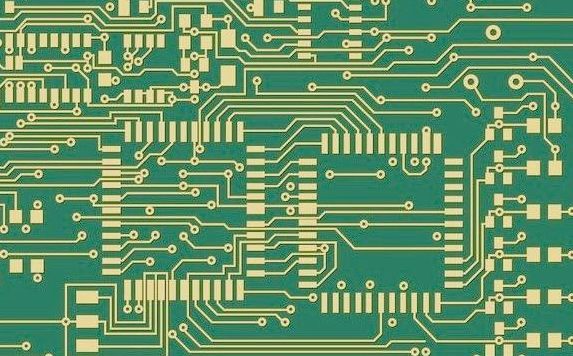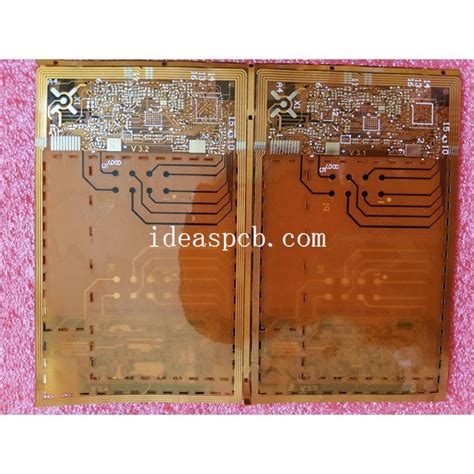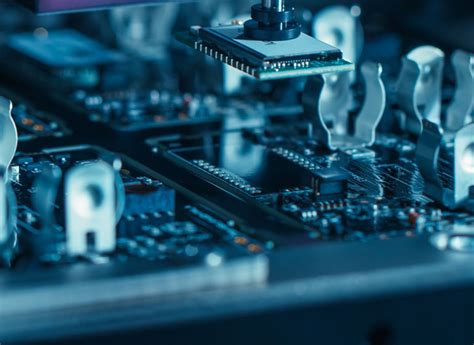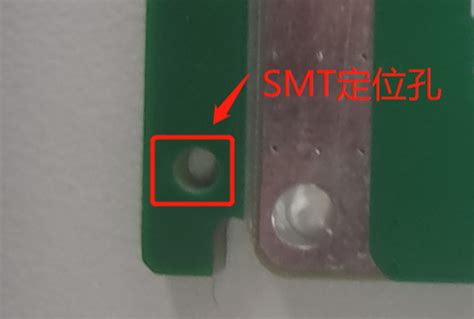Through-Hole PCB Assembly: A Comprehensive Guide
Introduction
Through-hole PCB assembly is a traditional method of mounting electronic components onto a printed circuit board (PCB) by inserting component leads through drilled holes and soldering them to pads on the opposite side. This method has been widely used in the electronics industry for decades and remains relevant today, especially for applications requiring high reliability, mechanical strength, and ease of manual assembly. Despite the growing popularity of surface-mount technology (SMT), through-hole technology (THT) continues to play a crucial role in various industries, including aerospace, automotive, and industrial electronics.
This article provides a comprehensive overview of through-hole PCB assembly, covering the key components, assembly processes, advantages and disadvantages, applications, and future trends.
Key Components in Through-Hole PCB Assembly
Through-hole PCB assembly involves the use of components with leads that are inserted into drilled holes on the PCB. Below are the key components commonly used in through-hole assembly:
- Resistors: Through-hole resistors are available in various packages, such as axial and radial leads. They are used to control the flow of current and voltage levels within the circuit.
- Capacitors: Through-hole capacitors, including electrolytic and ceramic types, are used to store and release electrical energy, smoothing out voltage fluctuations and ensuring a stable output.
- Diodes: Through-hole diodes are used for rectification, allowing current to flow in one direction only. They are essential for converting AC to DC and protecting the circuit from reverse voltage.
- Transistors: Through-hole transistors, such as bipolar junction transistors (BJTs) and field-effect transistors (FETs), are used for amplification and switching applications.
- Integrated Circuits (ICs): Through-hole ICs, including dual in-line packages (DIPs) and pin grid arrays (PGAs), are used for various functions, such as microcontrollers, memory, and signal processing.
- Connectors: Through-hole connectors are used to provide electrical connections between the PCB and external devices or cables. They are available in various configurations, such as headers, sockets, and terminal blocks.
- Transformers and Inductors: Through-hole transformers and inductors are used for voltage transformation, filtering, and energy storage in power supply circuits.
- Switches and Relays: Through-hole switches and relays are used for controlling electrical circuits, providing manual or automatic switching functions.
Through-Hole PCB Assembly Process
The through-hole PCB assembly process involves several stages, each requiring careful attention to detail. The process can be broadly divided into the following steps:
- PCB Design and Layout:
- Hole Placement: The PCB design must include accurately placed holes for component leads. The hole size and spacing must match the component specifications.
- Pad Design: Pads on the opposite side of the PCB must be designed to ensure proper soldering and electrical connections.
- Component Placement: The layout must consider the placement of through-hole components to ensure proper spacing and accessibility for assembly.
- Component Procurement:
- Component Selection: Components must be selected based on their specifications, including voltage ratings, current ratings, and temperature tolerances.
- Supplier Management: Components should be sourced from reputable suppliers to ensure quality and reliability.
- PCB Fabrication:
- Drilling: Holes are drilled into the PCB based on the design specifications. The drilling process must be precise to ensure proper alignment of component leads.
- Plating: The drilled holes are plated with conductive material (e.g., copper) to ensure electrical connectivity between layers.
- Solder Mask and Silkscreen: A solder mask is applied to protect the PCB, and silkscreen is added for component labeling and identification.
- Component Insertion:
- Manual Insertion: For low-volume or prototype assembly, components are manually inserted into the drilled holes. This process requires skilled labor and attention to detail.
- Automated Insertion: For high-volume production, automated insertion machines (e.g., axial and radial inserters) are used to place components accurately and efficiently.
- Soldering:
- Wave Soldering: In wave soldering, the PCB is passed over a wave of molten solder, which attaches the component leads to the pads on the opposite side. This method is commonly used for high-volume production.
- Selective Soldering: Selective soldering is used for boards with a mix of through-hole and surface-mount components. It involves applying solder only to specific areas, avoiding damage to sensitive SMT components.
- Hand Soldering: For rework or low-volume assembly, hand soldering is used to manually solder component leads to the PCB.
- Inspection and Testing:
- Visual Inspection: The assembled PCB undergoes visual inspection to check for soldering defects, such as cold joints, solder bridges, or insufficient solder.
- Automated Optical Inspection (AOI): AOI systems are used for more detailed analysis, detecting defects that may not be visible to the naked eye.
- Functional Testing: Functional testing involves powering up the board and verifying that it operates as intended, including checking the output waveform, voltage levels, and efficiency.
- Conformal Coating:
- Protective Coating: A conformal coating may be applied to protect the PCB from environmental factors such as moisture, dust, and temperature fluctuations. This helps to extend the lifespan of the board and improve its reliability.
- Final Assembly:
- Box Build: The assembled PCB may be integrated into a larger assembly, such as an enclosure or a complete electronic device.
- Cable and Harness Assembly: Cables and harnesses are assembled and connected to the PCB to provide external connections.
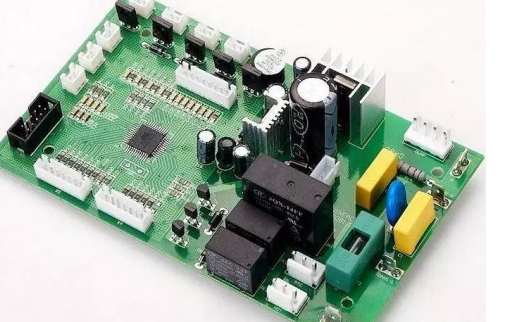
Advantages and Disadvantages of Through-Hole PCB Assembly
Through-hole PCB assembly offers several advantages and disadvantages compared to surface-mount technology. Below are the key pros and cons:
Advantages:
- Mechanical Strength: Through-hole components provide strong mechanical bonds, making them suitable for applications requiring high reliability and durability, such as aerospace and automotive electronics.
- Ease of Manual Assembly: Through-hole components are easier to handle and assemble manually, making them ideal for prototyping, low-volume production, and repair.
- Heat Dissipation: Through-hole components, particularly those with large leads, offer better heat dissipation compared to surface-mount components.
- High Power Handling: Through-hole components are capable of handling higher power levels, making them suitable for power supply and high-current applications.
- Reliability: The robust mechanical connections of through-hole components make them less prone to failure due to thermal cycling and mechanical stress.
Disadvantages:
- Size and Weight: Through-hole components are generally larger and heavier than surface-mount components, limiting their use in compact and lightweight designs.
- Higher Cost: The drilling and plating processes required for through-hole assembly increase the overall cost compared to surface-mount technology.
- Limited Component Density: Through-hole assembly limits the component density on the PCB, as it requires more space for holes and leads.
- Slower Assembly Process: Through-hole assembly is generally slower than surface-mount assembly, particularly for high-volume production.
- Design Complexity: The need for precise hole placement and pad design adds complexity to the PCB layout process.
Applications of Through-Hole PCB Assembly
Through-hole PCB assembly is used in a wide range of applications, particularly those requiring high reliability, mechanical strength, and ease of manual assembly. Below are some key applications:
- Aerospace and Defense:
- Avionics: Through-hole components are used in avionics systems, where reliability and durability are critical.
- Military Electronics: Military applications require robust and reliable electronics, making through-hole assembly a preferred choice.
- Automotive:
- Engine Control Units (ECUs): Through-hole components are used in ECUs, where high power handling and reliability are essential.
- Safety Systems: Automotive safety systems, such as airbag controllers and ABS modules, rely on through-hole assembly for durability.
- Industrial Electronics:
- Power Supplies: Through-hole components are used in industrial power supplies, where high power handling and heat dissipation are required.
- Control Systems: Industrial control systems, such as PLCs (Programmable Logic Controllers), use through-hole assembly for reliability.
- Consumer Electronics:
- Home Appliances: Through-hole components are used in home appliances, such as washing machines and refrigerators, where durability is important.
- Audio Equipment: High-fidelity audio equipment often uses through-hole components for their mechanical strength and reliability.
- Medical Devices:
- Diagnostic Equipment: Medical diagnostic equipment, such as MRI machines and ultrasound systems, use through-hole assembly for reliability.
- Patient Monitoring: Patient monitoring systems rely on through-hole components for their durability and performance.

Future Trends in Through-Hole PCB Assembly
While surface-mount technology continues to dominate the electronics industry, through-hole PCB assembly remains relevant, particularly for specialized applications. Below are some future trends shaping the through-hole assembly industry:
- Hybrid Assembly:
- Mixed Technology: The use of mixed technology (through-hole and surface-mount) is becoming more common, allowing designers to leverage the strengths of both methods.
- Selective Soldering: Selective soldering techniques are being adopted to handle mixed-technology boards, improving efficiency and reducing costs.
- Advanced Materials:
- High-Performance Substrates: The use of high-performance substrates, such as ceramic and metal-core PCBs, is increasing for applications requiring high thermal conductivity and reliability.
- Eco-Friendly Materials: The adoption of eco-friendly materials and processes is gaining traction, driven by environmental regulations and sustainability goals.
- Automation and Robotics:
- Automated Insertion: The use of automated insertion machines is increasing, improving the efficiency and accuracy of through-hole assembly.
- Robotic Soldering: Robotic soldering systems are being adopted for high-volume production, reducing labor costs and improving consistency.
- Miniaturization:
- High-Density Interconnects (HDIs): The development of high-density interconnects is enabling the use of through-hole components in compact designs.
- Advanced Packaging: Advanced packaging techniques, such as 3D packaging, are being explored to enhance the performance and miniaturization of through-hole assemblies.
- Quality and Reliability:
- Enhanced Testing: The adoption of advanced testing techniques, such as automated optical inspection (AOI) and X-ray inspection, is improving the quality and reliability of through-hole assemblies.
- Process Optimization: Continuous process optimization and quality control measures are being implemented to reduce defects and improve yield rates.
Conclusion
Through-hole PCB assembly remains a vital method in the electronics manufacturing industry, offering unique advantages in terms of mechanical strength, reliability, and ease of manual assembly. While surface-mount technology continues to dominate, through-hole assembly is indispensable for applications requiring high power handling, durability, and robustness.
The through-hole assembly process involves several stages, from PCB design and component insertion to soldering, inspection, and final assembly. Despite its disadvantages, such as higher cost and limited component density, through-hole assembly is widely used in industries such as aerospace, automotive, industrial electronics, and medical devices.
As the electronics industry evolves, future trends such as hybrid assembly, advanced materials, automation, miniaturization, and enhanced quality control are shaping the future of through-hole PCB assembly. By staying informed about these trends and leveraging the strengths of through-hole technology, manufacturers can continue to produce high-quality and reliable electronic products for a wide range of applications.

